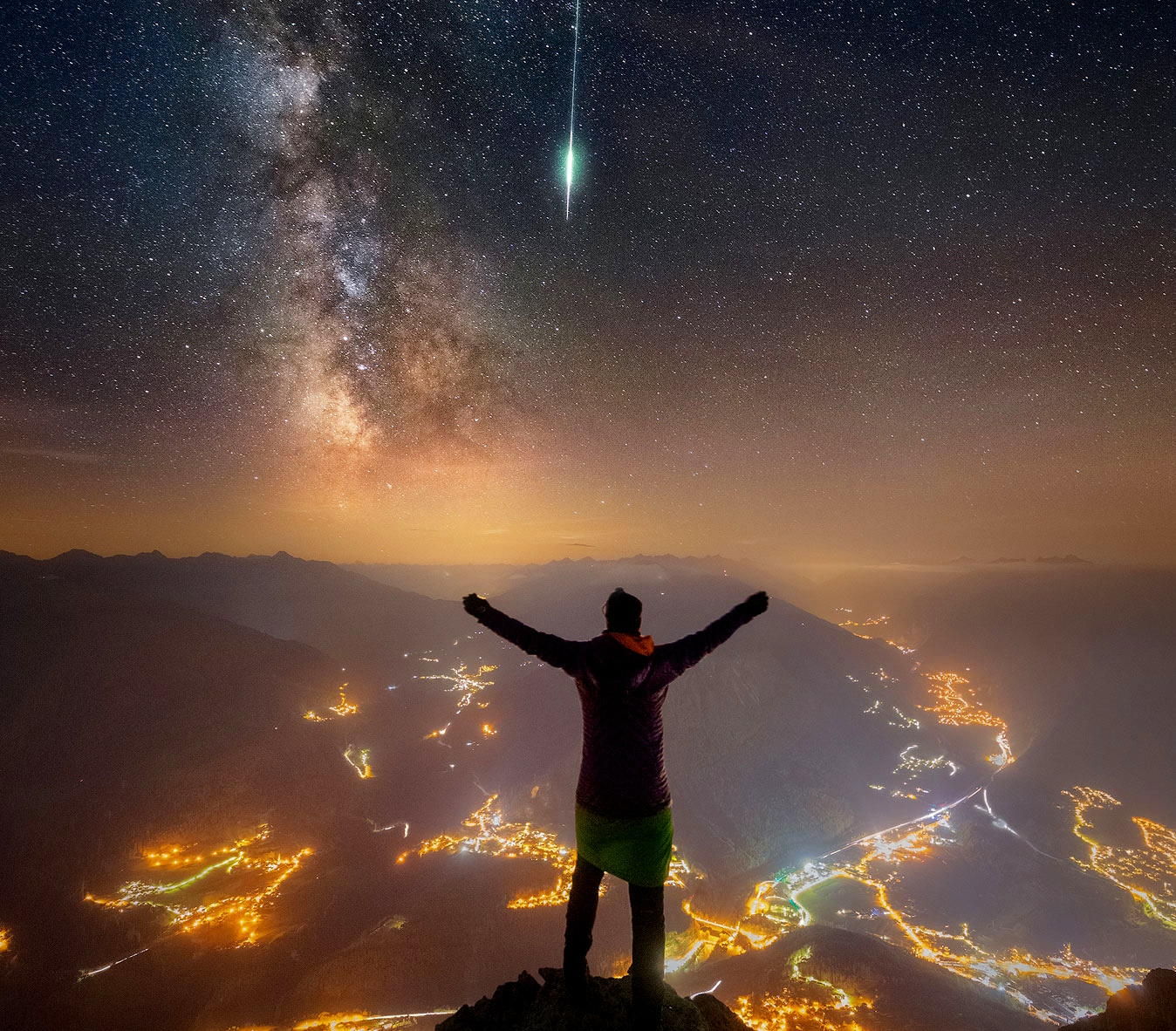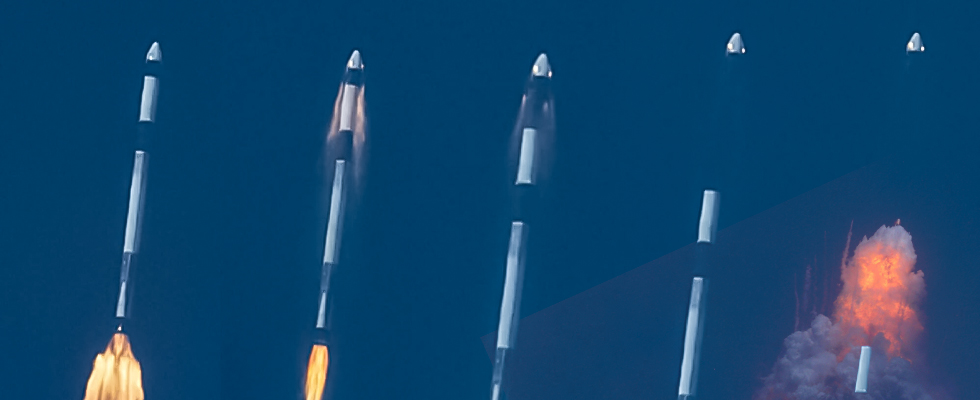Selection of the most interesting space news for the week: A huge fragment of unknown space debris was found on the beach in Australia; astronomers discovered a two-faced star, and we tell how Google aged the Universe and why it happened.

“For a successful technology, reality must take precedence over public relations, for nature cannot be fooled.”
― Richard P. Feynman
The first low-alcohol bar in zero gravity will be created in the USA
The Truly brand, which specializes in the production of a low-alcohol hard-seltzer drink, is going to organize the world’s first bar that will work in zero gravity. For this, they rented one of the planes that are used for training astronauts. More precisely, only five loyal fans of this company’s drinks will be lucky. In fact, the bar is an advertising campaign dedicated to the company’s new product called Lightly Fantastic. It is among its consumers that the opportunity to visit the most unusual bar on Earth will be played.
Maxar Technologies presents a service for easier access to its images
Maxar Technologies has presented its new platform called Maxar Geospatial Platform. So far, it is being tested by a limited number of users. But in the future, not only the archive of images will be available, but also the possibility of ordering them, as well as analytics. According to representatives of Maxar Technologies, MGP will be available in three main variants. The first one is intended for possible use by everyone. It’s called MGP Xpress. It is expected that the entire archive of photos with a volume of 125 petabytes of information will be available in it.
The second kind of this service is called MGP Pro. It will require verification from its users and is aimed primarily at corporate clients and government agencies. Not only archival, but also fresh images of the earth’s surface will be available in it. Therefore, it will be extremely relevant for the needs of defense. As for the third product of the platform, it is called the MGP API. It will provide programmers with a wide range of tools for creating their own software products based on MGP.
Saturn’s rings are disappearing: Take a picture of them
Astrophotographers are in a hurry to photograph Saturn’s rings as soon as possible, because after this summer they will disappear from our field of view. Soon Saturn’s rings will become harder to see. The tilt of the gas giant will soon make the rings almost invisible to observers on Earth. But it’s not just the angles that will be a problem. New research shows that they are literally disappearing. By 2025, they will almost completely disappear from the Earth’s field of view, since from this point of view, the edges of the rings will be in a head-on collision. It will take a long time before the rings become visible again and return to the state they are in now. They will continue to tilt towards their maximum of 27 degrees until 2032, and then slowly return back over the next ten-plus years.
Fortunately, before all this happens, Saturn’s rings will become the brightest and most visible for the first time next month. On August 27, 2023, Saturn will reach the opposition, the point where it lies directly opposite the Sun relative to the Earth. Therefore, it will be the brightest and the highest. The following summer nights will give astrophotographers the best chance to photograph the bright rings from Earth.
Two-faced star puzzles astronomers
An international team of researchers has announced the discovery of an extremely unusual white dwarf. One side of it consists of hydrogen, while the other of helium. The discovery was a complete surprise for astronomers. Before that, they were not aware of the existence of such objects.
White dwarfs represent the final stage of the evolution of sun-like stars. When the luminary that has turned into a red giant sheds the entire atmosphere, only one core remains of it, which then gradually contracts and cools down, gradually turning into a diamond. Such objects are called white dwarfs. They have a very high density. With masses similar to those of the Sun, they have a radius equivalent to the earth’s. Their atmospheres are usually dominated by hydrogen or helium. At the same time, the main element is about a thousand times more than the other.
A huge fragment of space debris on the beach discouraged Australia
A large golden cylindrical object encrusted with barnacles, which recently washed up on a beach in Western Australia, puzzled local authorities. They are still trying to figure out what kind of object it is. The first signs indicate that this is space debris. The Australian Space Agency refrains from commenting on what kind of object it might be. They only noted that the object could be part of a foreign space launch vehicle. The agency adds that it is now making inquiries regarding this object.
But Internet detectives have already outstripped the authorities. If they are to be believed, it seems that this object may be the dropped third stage of one of the Indian multi-stage launch vehicles for launching polar satellites PLSV.
Photo of the week

An Austrian astrophotographer managed to photograph simultaneously a meteor, the Milky Way galaxy and the Alps during the Perseid meteor shower – a celestial phenomenon that has already begun. Nicholas Roemmelt climbed the mountain to take his picture, which is a combination of different exposures taken from one place without moving the camera. The most difficult thing was to photograph a meteor.
Interesting figure — 222 km/s

The British company Pulsar Fusion has begun construction of the world’s largest thermonuclear rocket engine. It seeks to prove that the technology is viable and will significantly reduce the time of space flights in the future. If the scientists manage to succeed, the temperature in the engine will reach several hundred million degrees. It’s hotter than the surface of the Sun. The excess energy should help the rocket to reach a speed of more than 800 thousand km/h (222 km/s). In theory, such progress in the movement of spacecraft will make it twice as fast to reach Mars.
Something to read on the weekend

The search results on the Google website in response to the English query “age of the universe” have angered many astronomers, accusing it of misinformation. The issue arises from the fact that in response to this query, the search engine started providing an answer of 26.7 billion years, which contradicts the widely accepted scientific estimation. The editors of The Universe Space Tech tell How the Story about the Age of the Universe Revealed Key Internet Issues.
Have you ever tried to imagine what happens a moment before a rocket crash? Do astronauts have a chance to survive, because in such a situation, people’s lives depend on the timely operation of the crew emergency rescue system (SAS)? We explain in detail how the SAS are arranged on various spacecraft.
Read also: In Australia, satellites will catch poachers, and on Titan, rivers flow like on Earth: News Digest
Follow us on Twitter to get the most interesting space news in time
https://twitter.com/ust_magazine

